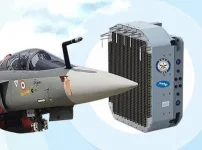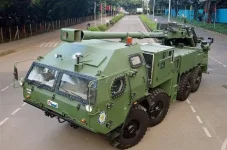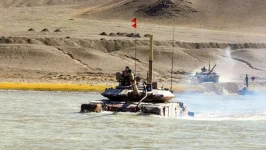- Views: 1K
- Replies: 1
The Indian Army's drive to acquire a modern, lightweight, and agile artillery platform is advancing with the development of the Towed Gun System (TGS) by the Defence Research and Development Organisation (DRDO).
This new system is being engineered to meet the Army's specific need for a 155mm/52 calibre howitzer that weighs less than 15 tons.
The TGS is essentially a lighter version of DRDO's well-regarded Advanced Towed Artillery Gun System (ATAGS). However, to achieve the desired weight reduction, the TGS will incorporate a 23-litre chamber, a modification from the larger 25-litre chamber found in the original ATAGS.
This design choice has prompted discussions regarding the balance between the gun's overall performance and its ease of movement in challenging terrains.
The development of the TGS is rooted in the Indian Army’s Field Artillery Rationalisation Plan (FARP). This long-term plan seeks to standardise the Army's artillery arsenal to the 155mm calibre, enhancing operational efficiency, particularly in diverse and difficult terrains such as those along India's northern borders.
The original ATAGS, a notable success from a collaboration between DRDO’s Armament Research and Development Establishment (ARDE) and private sector firms Tata Advanced Systems and Bharat Forge, established new benchmarks with its impressive firing range of up to 48 kilometres using high-explosive base-bleed (HE-BB) ammunition and features like an all-electric drive. Despite these advancements, its 18-ton weight posed limitations for quick deployment in mountainous regions or areas with underdeveloped infrastructure.
In light of these operational needs, the Army issued a Request for Information (RFI) specifying a requirement for a Towed Gun System not exceeding 15 tons. DRDO’s response has been to adapt its ATAGS design to create the TGS. This move signifies a strategic adjustment, giving higher priority to mobility and rapid deployability, even if it means some compromise on the heavier firepower attributes of the original ATAGS.
The Army plans an initial procurement of approximately 400 TGS units, with the potential to acquire up to 1,200 units, indicating an intention for the TGS to become a primary towed artillery system.
Key modifications in the TGS include a lighter barrel and the reduced 23-litre chamber capacity. The ATAGS’s larger 25-litre chamber was designed to accommodate greater propellant charges, enabling its world-record firing range and enhanced destructive power.
The 23-litre chamber in the TGS, on the other hand, brings it in line with many international artillery systems, such as those produced by French company Nexter or Israeli firm Elbit Systems, and is crucial for achieving the sub-15-ton weight target.
This reduction, along with a lighter barrel and optimised structural engineering, will allow the TGS to be towed by standard military vehicles and be more easily airlifted, significantly improving its operational utility in high-altitude zones like Ladakh and Arunachal Pradesh.
However, the adoption of a 23-litre chamber does entail a trade-off. The smaller chamber capacity limits the amount of propellant that can be used, which is expected to result in a reduction in the maximum firing range compared to the 48 kilometres achieved by the ATAGS.
While official figures for the TGS's range have not yet been released, it is anticipated to be in the region of 40 to 45 kilometres, similar to other 155mm/52 calibre systems with 23-litre chambers using comparable ammunition. This adjustment has led some defence analysts to express concerns, as the ATAGS's extended range was seen as a significant tactical advantage, especially in scenarios involving potential adversaries whose artillery might be outranged.
DRDO's initiative to offer a lightweight ATAGS variant through the TGS program is a practical response to the Army's evolving operational requirements. The 18-ton ATAGS, despite its technological prowess, presented logistical difficulties in rugged terrain and required heavier towing equipment.
The TGS, in contrast, is designed for greater tactical flexibility, enabling quicker deployment across varied landscapes including plains, deserts, and mountainous areas, without demanding a complete overhaul of the Army's existing logistical support systems. Its lighter construction also reflects insights gained from recent global conflicts, where the mobility of artillery systems has proven to be as vital as their firepower.
To compensate for any performance reduction due to the smaller chamber, DRDO is expected to incorporate other established strengths of the ATAGS into the TGS. These may include its all-electric drive system, known for reliability, and automation features that contribute to faster firing rates.
The TGS is also anticipated to maintain compatibility with a wide array of 155mm ammunition types, including precision-guided munitions, ensuring it remains a versatile and effective artillery system despite the design changes for reduced weight.





